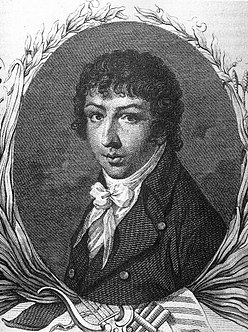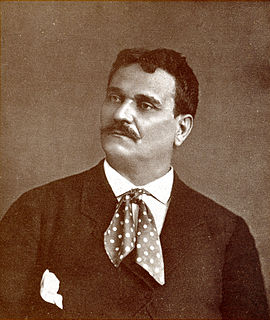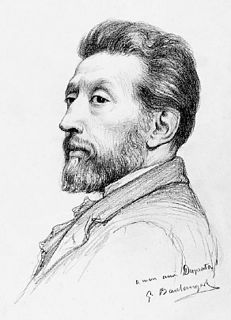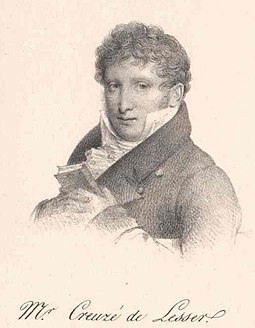
Charles Simon Favart was a French playwright.

The Opéra-Comique is a Parisian opera company, which was founded around 1714 by some of the popular theatres of the Parisian fairs. In 1762 the company was merged with, and for a time took the name of its chief rival the Comédie-Italienne at the Hôtel de Bourgogne, and was also called the Théâtre-Italien up to about 1793, when it again became most commonly known as the Opéra-Comique. Today the company's official name is Théâtre national de l'Opéra-Comique, and its theatre, with a capacity of around 1,248 seats, sometimes referred to as the Salle Favart, is located in Place Boïeldieu, in the 2nd arrondissement of Paris, not far from the Palais Garnier, one of the theatres of the Paris Opéra. The musicians and others associated with the Opéra-Comique have made important contributions to operatic history and tradition in France, and to French opera. Its current mission is to reconnect with its history, and discover its unique repertoire, to ensure production and dissemination of operas for the wider public. Mainstays of the repertory at the Opéra-Comique during its history have included the following works which have each been performed more than 1,000 times by the company: Cavalleria Rusticana, Le chalet, La dame blanche, Le domino noir, La fille du régiment, Lakmé, Manon, Mignon, Les noces de Jeannette, Le pré aux clercs, Tosca, La bohème, Werther and Carmen, the last having been performed more than 2,500 times.

L'Olimpiade is an opera libretto in three acts by Metastasio originally written for an operatic setting by Antonio Caldara of 1733. Metastasio’s plot vaguely draws upon the narrative of "The Trial of the Suitors" provided from Book 6 of The Histories of Herodotus, which had previously been the base for Apostolo Zeno's libretto Gli inganni felici (1695). The story, set in Ancient Greece at the time of the Olympic Games, is about amorous rivalry and characters' taking places to gain the loved one. The story ends with the announcement of two marriages.

The following discography contains information regarding some of the published recordings by Enrico Caruso made from 1902 through 1920 as have been made available in selected compact disc compilations.

Egidio Romualdo Duni was an Italian composer who studied in Naples and worked in Italy, France and London, writing both Italian and French operas.

Francesca di Foix is a melodramma giocoso in one act by Gaetano Donizetti with a libretto by Domenico Gilardoni based on one by Jean-Nicolas Bouilly and Emmanuel Mercier-Dupaty for Henri Montan Berton's 3-act opéra-comique Françoise de Foix, inspired by the life of Françoise de Foix.
Gioacchino Cocchi was a Neapolitan composer, principally of opera.
The French term comédie mêlée d'ariettes was frequently used during the late ancien régime for certain types of opéra comique.

Le pré aux clercs is an opéra comique in three acts by Ferdinand Hérold with a libretto by François-Antoine-Eugène de Planard based on Prosper Mérimée's Chronique du temps de Charles IX of 1829.

Dido, Queen of Carthage was an opera in three acts by Stephen Storace. Its English libretto by Prince Hoare was adapted from Metastasio's 1724 libretto, Didone abbandonata, which had been set by many composers. Storace's opera premiered on 23 May 1792 at The King's Theatre in London combined with a performance of his masque, Neptune's Prophecy. The story is based on that of Dido and Aeneas in the fourth book of Virgil's Aeneid. The opera was not a success and was never revived after its original run of performances. The score has been lost.
Antonio Palomba (20 December 1705 - 1769) was an Italian opera librettist, poet, harpsichordist, and music educator. He also worked as a notary. Born in Naples, he became a teacher of the harpsichord at the Teatro della Pace in 1749. Most of his more than 50 opera libretti were comedic works written for composers of the Neapolitan school. He also wrote some works for performance in Florence, Bologna and abroad. He died in Naples in 1769; one of the victims of a fever epidemic in the city. Many of his libretti were set more than once to music, and composers continued to use his libretti up into the 1830s.

Jean-Vital Jammes was a French opera singer. During a stage career spanning 40 years, he created many leading baritone roles, including Zurga in Bizet's Les pêcheurs de perles and Ourrias in Gounod's Mireille. Born in Le Passage d'Agen near the town of Agen, he was largely self-taught and made his stage debut in 1841 at the age of 16. After singing in a several provincial theatres, he was engaged by the Théâtre Lyrique in Paris and later by the Opéra-Comique. Following his retirement from the stage, Ismaël lived in Marseille where he died at the age of 68.

Adriano in Siria is a libretto by Italian poet Metastasio first performed, with music by Antonio Caldara, in Vienna in 1732, and turned into an opera by at least 60 other composers during the next century. Metastasio based the background of the story on late Classical works by Cassius Dio and Elio Sparziano.

Jules Laurent Anacharsis Duprato was a 19th-century French composer.

Baron Auguste Creuzé de Lesser was a French poet, playwright, librettist and politician.
Henri François Berton called Berton fils was an early 19th-century French composer.
"Tre giorni son che Nina in letto senesta" is an 18th Century song traditionally attributed to Pergolesi, but now more often to Vincenzo Legrenzo Ciampi (1719–1762). The song was one of the "Arie antiche" favourites of 19th Century salons associated with Alessandro Parisotti, and in the 20th Century was recorded by Enrico Caruso, Richard Tucker as well as more recently, attributed to Ciampi, by Alfredo Kraus and Ramon Vargas. The attribution to Pergolesi may have come from the mistaken assumption that the song is based on an aria sung about Nina in Pergolesi's Lo frate 'nnamorato.

The Ospedale degli Incurabili is a large sixteenth-century hospital building on the Fondamenta delle Zattere, in the sestiere of Dorsoduro, in Venice in north-eastern Italy. Today it is occupied by the Accademia di Belle Arti di Venezia. It was built in the second half of the sixteenth century; the church – which no longer exists – may have been designed by Jacopo Sansovino.
















